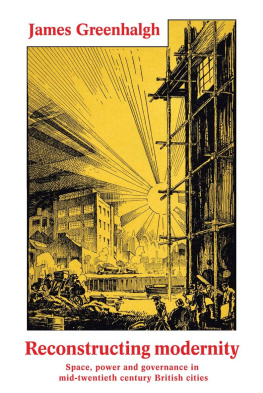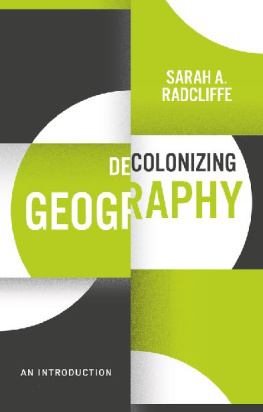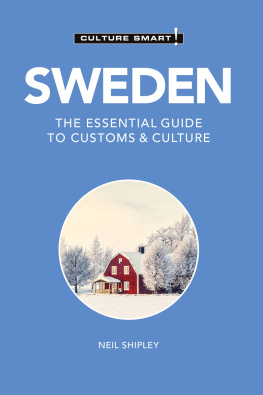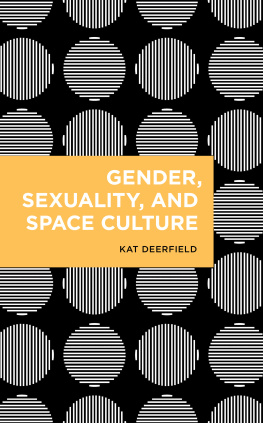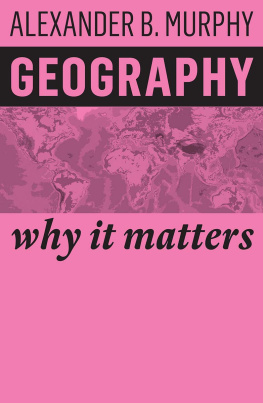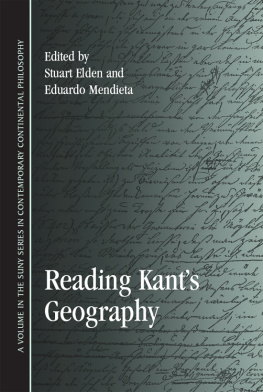BY NORTHERN LIGHTS
For
Bertram (in memoriam)
and
Sanna
By Northern Lights
On the Making of Geography in Sweden
Anne Buttimer
University College Dublin, Ireland
Tom Mels
Kalmar University, Sweden
First published 2006 by Ashgate Publishing
Published 2016 by Routledge
2 Park Square, Milton Park, Abingdon, Oxon OX14 4RN
711 Third Avenue, New York, NY 10017, USA
Routledge is an imprint of the Taylor & Francis Group, an informa business
Copyright Anne Buttimer and Tom Mels 2006
Anne Buttimer and Tom Mels have asserted their moral right under the Copyright, Designs and Patents Act, 1988, to be identified as the authors of this work.
All rights reserved. No part of this book may be reprinted or reproduced or utilised in any form or by any electronic, mechanical, or other means, now known or hereafter invented, including photocopying and recording, or in any information storage or retrieval system, without permission in writing from the publishers.
Notice:
Product or corporate names may be trademarks or registered trademarks, and are used only for identification and explanation without intent to infringe.
British Library Cataloguing in Publication Data
Buttimer, Anne
By northern lights: on the making of geography in Sweden
1. Geography - Sweden - History 2. Geography - Philosophy
I. Title II. Mels, Tom
910.9'485
Library of Congress Cataloging-in-Publication Data
Buttimer, Anne.
By northern lights: on the making of geography in Sweden / by Anne Buttimer and Tom
Mels.
p. cm.
Includes bibliographical references and index.
ISBN 0-7546-4814-1
1. Geography--Sweden--History. 2. Geography--Philosophy. I. Mels, Tom. II. Title.
G96.B88 2006
910.985--dc22
2006002742
ISBN 9780754648147 (hbk)
ISBN 9781138250895 (pbk)
Anne Buttimer is Professor emeritus of Geography at University College Dublin and has previously held research and teaching positions in Belgium, Canada, France, Scotland, Sweden and USA. She was invited to Sweden first in 1973 and her interactions with Swedish colleagues continue to this day. She was Visiting Fulbright Professor of Social Ecology at Lund University in 1976 and was full-time researcher there during 19771979 and 19821988.
Tom Mels studied human geography and environmental science at the University of Utrecht, the Netherlands. He completed his doctoral thesis at Lund University in 1999 and is currently a lecturer of human geography at the University of Kalmar, Sweden. In the academic year 20012002, he visited the Geography Department at University College Dublin for post-doctoral research. His research interests include historical geographies of landscape and nature.
by Torsten Hgerstrand
Our conversation began in 1971 in a noisy reception hall in Budapest. Anne Buttimer enjoyed seeing the quotations from textbooks in quantitative geography contract into a real person. On my side I was happy to be able to apologize for not having rendered an account of Swedish social geography that Anne had asked for in a letter, sometime in the early sixties. The following day we went for a walk. Human nature being as it is, it was not long until I selfishly began preaching time-geography, using an envelope and the sandy park way to explain my graphs and what I believed they were good for.
Anne had just finished a paper on Vidal de la Blaches geography, and we agreed that his central concept of genre de vie was a common ground where our interests met. I also became convinced that Anne had great sympathy for the general direction of my efforts to grasp ongoing processes in their evolving context. An older scholar as much as a younger one likes to be understood and appreciated. I was glad to have won a proselyte.
But with Anne Buttimer one must be prepared for the unexpected.
Everyone is familiar with a situation like this. Summer evening after a warm day: well known near things and sounds as night comes on. Suddenly a flash of light engraves sharp contours up to a distant horizon. You find yourself in the midst of a landscape with depths that routine daytime preoccupations have prevented you from seeing. To see them is revealing and alarming.
One fine day some years after Budapest Anne said to me that the worldview depicted in my kind of diagrams reminded her of a dance macabre. I felt a startling flash of light. I was alarmed. My whole effort had for decades been to work towards a holistic view of geography which should be able to catch evolving life.
Already in the early 1940s I had set out to study a human population in its time and space context. Using the church-registers of a rural Swedish parish my wife Britt and I worked out the individual biographies of all the many thousands of individuals who had lived in the area over the last hundred years. We followed them all from year to year, from home to home and from position to position. As the data accumulated we watched the drama of life unfold before our eyes with graphic clarity. It was something of stark poetry to see the people who lived around us, many of whom we knew, as the tips of stems, endlessly twisting themselves down in the realms of times past.
This experience of seeing a population of an area as a kind of vegetation it is the best metaphor I can find has shaped my world-view and my efforts as a geographer. To me, any region is first of all the fate of its people. To bring to others, however, what was clear in my own mind became an overriding problem. Words could not do it. Statistics in their present form could not do it because of their indefensible practice of aggregating individual events as if they were free-floating explosions without connection with past, neighbouring or future circumstances. Maps could not do it either. They show neither history nor future.
From my frustration a dream gradually emerged. Why not try to develop a language which could depict the world and its course in a way reminiscent of the manner in which a musical score represents sounding music? The strength of a musical score is its revelation of both large and intermediate patterns in time and space as at the same time it is true to details. The score respects the unity of time and space. A flute playing in Stockholm today and a violin in Malm tomorrow makes no duet. Tones must come from the same piece of time and space in order to speak and answer. The score is an ecological language. The musical score seemed worth imitating. I must stress that the score should not be understood as being a goal in itself. It is a first step, a means of recording in order to make visible an invisible landscape so that eye and thought can wander in it and discover hitherto unseen roots, stems and flowers in the woodland of the past.
And what had been achieved? As Anne had suggested, a dance macabre a chilly recording by a detached observer, a hollow rattle of bones, but no communication of the vibrating sound of full orchestra. I realized how firmly I was anchored to the traditional natural science outlook, despite all my interest in human affairs and all efforts to integrate at right angles to the systematic branches of knowledge.


